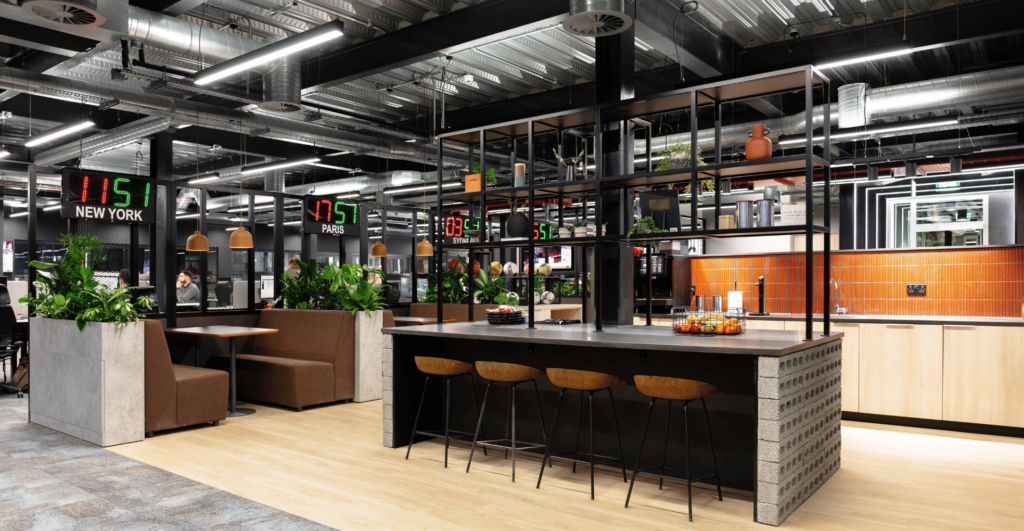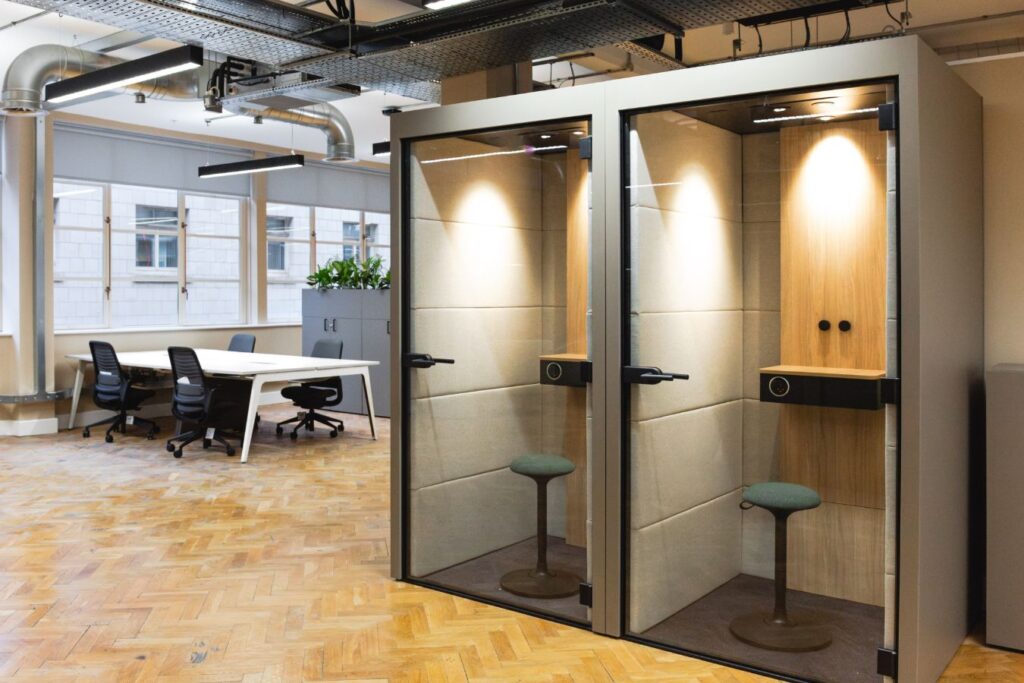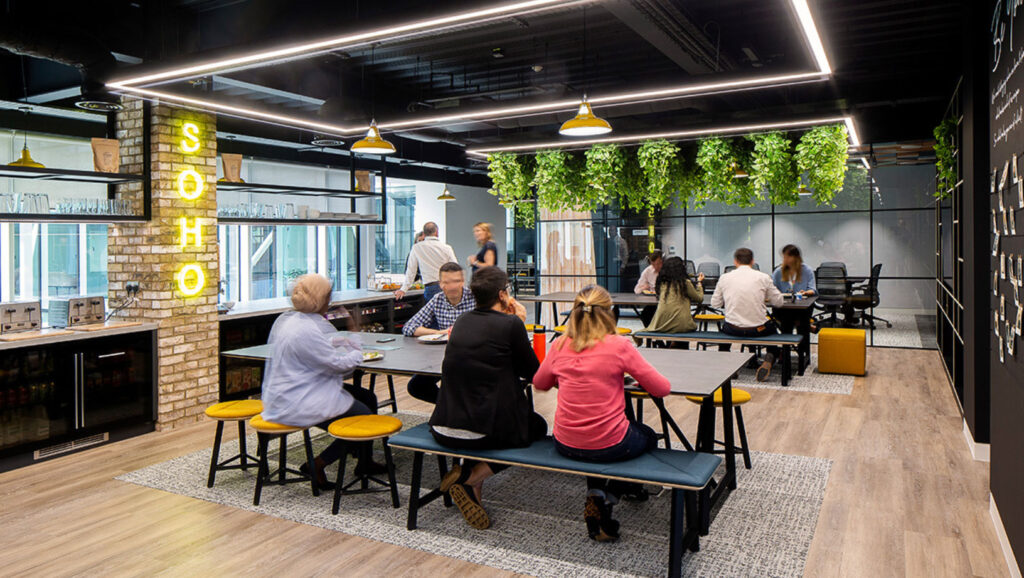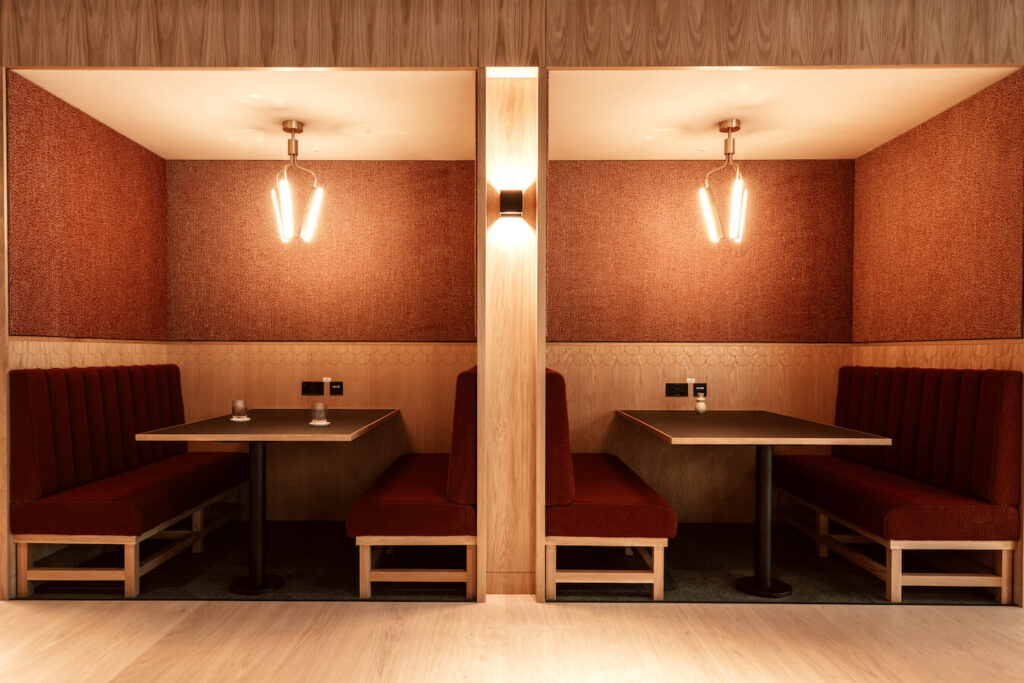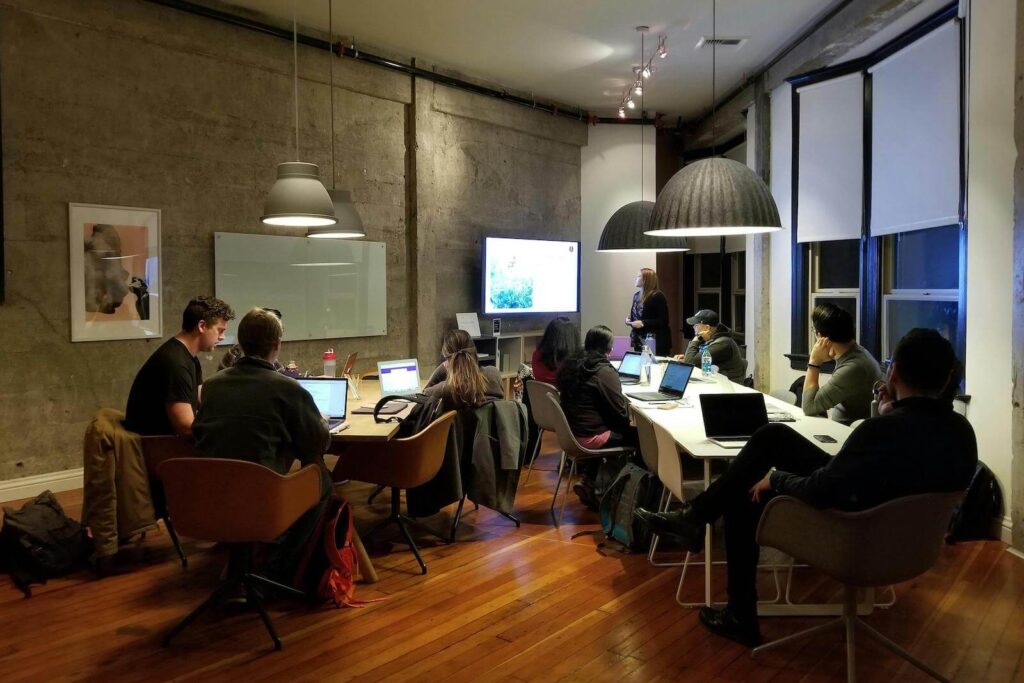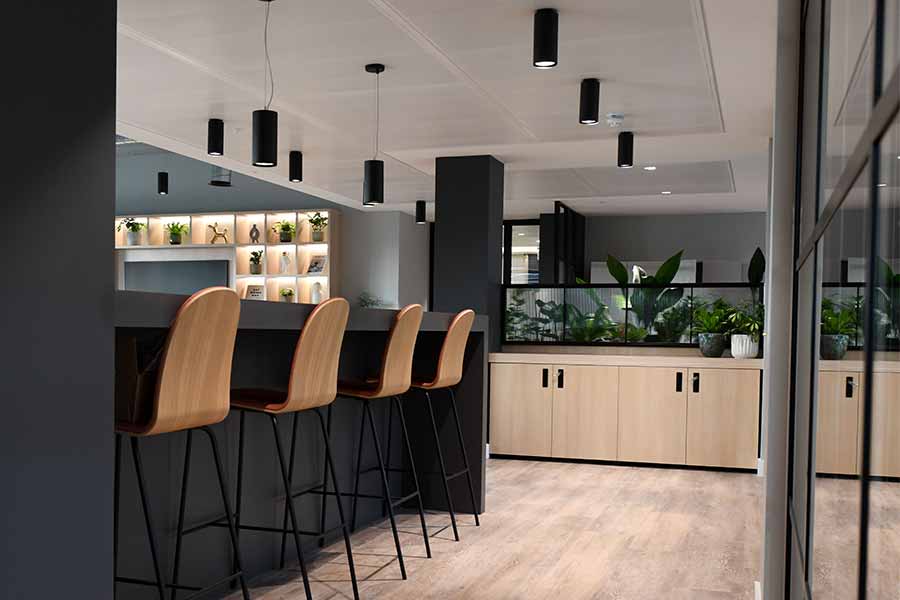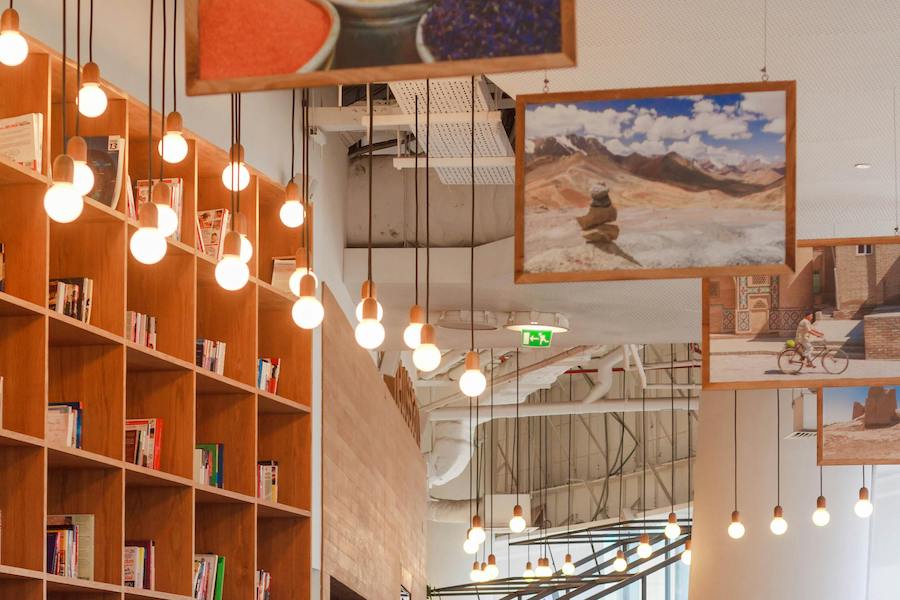AI is the hot topic of the moment in a whole host of industries and sectors. It is touching all areas of our lives, from the weird and wonderful through to the mundane and day-to-day.
AI is all around us, even when we don’t realise it—just take Siri and Alexa as examples of AI that have already been normalised as part of our everyday lives.
Commercial office design has certainly not escaped the grasp of Artificial Intelligence, which means there’s going to be some evolution on the horizon in the industry.
In fact, AI has already made advancements in how we design and use workplaces—but how much impact is it likely to have moving forward?
In this blog post, we cover:
- What AI is
- How AI might affect modern office interior design
- If AI has the potential to remove the need for human interior designers
- How AI can help to improve the employee workplace experience
So, let’s explore the future of office design and AI’s place in it.
What exactly is Artificial Intelligence (AI)?
In a nutshell, AI is a simulation of human intelligence, providing an alternative to person-led processes and systems and replacing them with computer-based systems.
AI does this by gathering experiences and data over time and learning from it to adapt its systems. It constantly analyses things like trends and algorithms to form its predictions and provide us with rich information.
This learning is what separates AI from standard computer systems that require definitive instructions to function. Like humans, AI evolves and develops independently, shifting with the experience it collects—this is its unique intelligence.
Unlike standard computer systems, AI has a mind of its own (i.e. its own kind of cognitive capabilities) and doesn’t necessarily need us to operate it or tell it what to do. The most advanced versions of AI have even started to show human characteristics like emotions and creativity.
How does AI affect modern office interior design?
AI has the potential to drive groundbreaking innovation in how modern offices are designed, configured and furnished. Let’s explore some of the most positive ways AI is already impacting office interior design today and the key areas we predict it to be most useful moving forward.
Data-based workspace design
Some of the key ways access to AI-generated data can positively influence modern office design include:
Trend analysis – AI can analyse data from various different sources, including social media, design publications, and industry reports, to identify trends in commercial design. Interiors teams can then use this information to incorporate relevant trends into their design schemes.
AI-generated images – AI-powered simulation tools can generate virtual versions of office designs. Interior designers can then use this digital imagery to explore different design options, explore strategies, and evaluate the impact of specific design decisions before bringing them to life in the physical workspace.
Real-time space usage insights – This is where AI tools can be implemented to gather data about how employees are actually using a workspace and the various settings within it. More on this a little further on.
More personalised workspaces
AI can be used to personalise workspaces based on individual preferences and work habits. For example, smart lighting systems can adjust brightness and colour temperature according to the time of day or task.
AI-compatible furniture, such as desks and chairs, can adapt to users’ ergonomic needs and provide employers with real-time feedback on posture and health. This will allow the space and the furniture in it to support those using it.
The more workspace design can be personalised, the more enhanced comfort and productivity will be.
Space usage insights
AI analytical systems and sensors can provide data-based information about how a workspace is used, which includes the entire workplace ecosystem or specific settings within it.
This can provide business owners and office design companies with valuable insights about:
- How and why a space is used (types of tasks, etc.)
- When a space is used (time of day, length of time, etc.)
- How often a space is used versus how often it is unused
- Who is using it (job roles, individuals, teams, etc.)
These types of insights create a real-time picture of how the workspace is being used by those in so employers and office designers can provide more of what’s needed and less of what isn’t.
For example, if a business owner can see that there are parts of the workspace that are regularly unused or even rarely used at all, they could consider:
- Redesigning the redundant spaces to provide something more useful. If the usage insights show that meeting rooms are often fully booked, these unused spaces could be refurbished into additional meeting spaces.
- Downsizing their office by moving to a new, smaller workspace that suits their needs more effectively and will help cut unnecessary costs and overheads.
Will AI remove the need for human interior designers?
For some people, AI is a daunting topic because there are concerns that computer systems will eventually become intelligent enough to remove the need for human skills entirely.
However, we believe there will always be a need for humans in the office interior design process, no matter how sophisticated technology becomes—we believe AI will simply be a powerful tool there to support and strengthen what human designers can do.
By automating routine tasks, providing data-driven insights, and adding even more strategy to the design process, AI can empower designers to become more creative and deliver more innovative solutions to clients.
The synergy between human creativity and AI technology is only likely to take commercial interior design to the next level, as opposed to AI replacing human designers.
Benefits human designers bring that AI can’t include:
- Client liaising and relationship-building.
- Contextual understanding of how humans use workspaces.
- Advanced creativity levels that AI is currently nowhere near reaching.
- Experimentation and out-of-the-box thinking—AI certainly isn’t known for taking risks or trying something new.
Can AI help to improve the employee workplace experience?
As you can see, there are so many ways in which AI can enhance the office design process, which in turn, means there’s a whole host of ways in which it can also improve the employee experience. Below are some of the most prominent examples of how.
Better environmental control
AI-powered systems can adjust heating, ventilation, and air conditioning settings based on things like occupancy levels and environmental conditions. This not only improves energy efficiency but also creates more comfortable working environments and helps maintain indoor air quality.
More human-centric, inclusive design
The main overall benefit of incorporating AI into an office interior design strategy is that decisions become more purposeful and based on facts. This prevents design schemes being solely led by aesthetics.
Understanding how people are using the space in real life and real-time, for instance, means the working environment can be adapted to meet the needs of those using it. This includes a more comprehensive understanding and approach to inclusive office design.
Smoother collaboration and communication
When it comes to innovating how employees use meeting rooms and collaboration spaces, AI can make co-working and communication slicker, smoother and far more efficient. This can also enhance interaction between remote and office-based people.
More sophisticated security
AI-based security systems can make it easier to monitor offices for unauthorised access, which can help provide a safer work environment for employees and office contents.
Some things to carefully consider when it comes to designing with AI
As amazing and full of potential as AI already is, there’s still a great deal of work to be done and it is advancing all the time.
The nature of AI is that is learns from algorithms and experiences, so it’s always going to be a work in progress. That’s why, in our opinion, it’s important to only ever use it as a supportive tool.
Below are some important factors to keep in mind if you do want to explore the possibilities of AI when it comes to modern office design.
AI information isn’t always up to date
It takes time for AI to gather and compile its research and information, so what it provides is very rarely the most up-to-date or recent version. This is important to keep in mind when making important data-based design decisions.
Unreliable regulation compliance
Regulations around things like fit out and construction are being updated all the time and it’s crucial that commercial design schemes are compliant. As AI doesn’t always deliver the most up-to-date version of information, you shouldn’t rely on this for regulatory guidance.
Information is generalised and trend-led
Because AI works on algorithms and trend-based data, it means the information it provides is generalised. So, when it comes to addressing workplace issues specific to businesses and their space users, AI guidance should only be supplementary to professional design services.
Get in touch to speak to our team of experts about your upcoming workspace transformation, or to learn more about our financing options.


